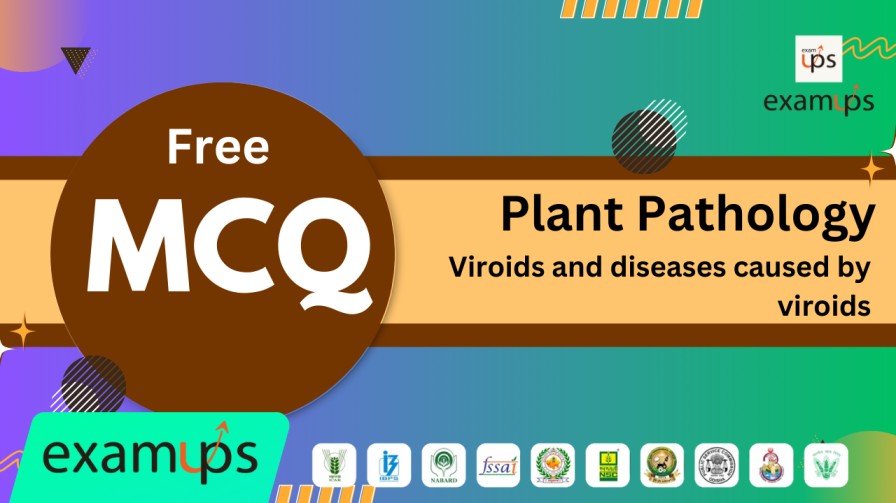MCQ on Role of cattle and other domestic animals – management of cattle for draught and milk – indigenous breeds for ICAR-JEF, ICAR-SRF, ICAR-NET, IBPS-AFO/SO, Pre-PG, BHU Pre-PG, IFFCO-AGT, CCI, FCI, B.sc, M.sc, All Agriculture Competitive Exams.
1. Which country ranks first in both cattle and buffalo population globally?
- a) China
- b) India
- c) United States
- d) Brazil
Answer: b) India
Explanation: India ranks first in both cattle and buffalo population globally, with 15% and 52% respectively.
2. How many breeds of cattle does India have?
- a) 10
- b) 15
- c) 26
- d) 30
Answer: c) 26
Explanation: India has the largest number of cattle breeds in the world, totaling 26.
3. Which characteristics make zebu cattle prized in India and globally?
- a) Cold tolerance and high milk production
- b) Disease resistance and heat tolerance
- c) Ability to survive in waterlogged areas
- d) Short gestation period and large body size
Answer: b) Disease resistance and heat tolerance
Explanation: Zebu cattle are highly valued for their disease resistance, heat tolerance, and ability to thrive in harsh environments.
4. What percentage of India’s gross national product is contributed by animal husbandry?
- a) 10%
- b) 26.4%
- c) 50%
- d) 75%
Answer: b) 26.4%
Explanation: Animal husbandry contributes 26.4% to India’s gross national product.
5. What is the annual growth rate of animal husbandry in India?
- a) 2.5%
- b) 6.2%
- c) 10%
- d) 15.5%
Answer: b) 6.2%
Explanation: The annual growth rate of animal husbandry in India is 6.2%.
6. Which sector ranks first in milk production globally?
- a) China
- b) United States
- c) India
- d) Brazil
Answer: c) India
Explanation: India ranks first in milk production globally.
7. How does animal husbandry contribute to agriculture and rural life?
- a) By providing employment opportunities only
- b) By serving as a source of food, power, and other resources
- c) By reducing crop yields through overgrazing
- d) By contributing to urbanization
Answer: b) By serving as a source of food, power, and other resources
Explanation: Animal husbandry contributes to agriculture and rural life by providing various resources such as food, power, manure, etc.
8. Which animal is not mentioned as a source of various products in the passage?
- a) Cattle
- b) Sheep
- c) Dogs
- d) Goats
Answer: c) Dogs
Explanation: Dogs are not mentioned as a source of various products in the passage.
9. What is the significance of indigenous breeds in India’s livestock heritage?
- a) They are known for their high milk production.
- b) They contribute to genetic diversity and adaptation to local conditions.
- c) They are primarily raised for meat production.
- d) They are imported from other countries.
Answer: b) They contribute to genetic diversity and adaptation to local conditions.
Explanation: Indigenous breeds play a significant role in India’s livestock heritage by contributing to genetic diversity and adaptation to local conditions.
10. Which continent has not received zebu cattle exports from India?
- a) Asia
- b) Africa
- c) Europe
- d) Australia
Answer: c) Europe
Explanation: Zebu cattle exports from India have been received by countries in Asia, Africa, the Americas, and Australia, but not Europe.
11. Which animal was the first to be domesticated according to the passage?
- a) Cow
- b) Dog
- c) Horse
- d) Elephant
Answer: b) Dog
Explanation: The passage states that the dog was the first animal to be domesticated in the Old Stone Age (10,000 BC).
12. In which period were other farm animals domesticated according to the passage?
- a) Old Stone Age
- b) Middle Ages
- c) New Stone Age
- d) Industrial Revolution
Answer: c) New Stone Age
Explanation: Other farm animals were domesticated in the New Stone Age, around 7500-6500 BC.
13. Which animals were considered to be domesticated first in Europe and Asia?
- a) Cow and pig
- b) Horse and cow
- c) Sheep and goat
- d) Dog and cat
Answer: b) Horse and cow
Explanation: It is considered that the horse and cow were domesticated first in Europe and Asia.
14. Which animal was domesticated first in China?
- a) Cow
- b) Pig
- c) Horse
- d) Elephant
Answer: b) Pig
Explanation: The passage mentions that the pig was domesticated first in China.
15. According to the passage, which animal was domesticated first in India?
- a) Cow
- b) Pig
- c) Elephant
- d) Buffalo
Answer: d) Buffalo
Explanation: The passage states that poultry, elephants, and buffaloes were domesticated first in India.
16. What does evidence from Mohenjo-daro suggest about indigenous cattle breeds?
- a) They were brought to India by Aryans.
- b) They originated outside of India.
- c) They originated in India.
- d) They were imported from Europe.
Answer: c) They originated in India
Explanation: Evidence from Mohenjo-daro excavation suggests that indigenous breeds of cattle originated in India and were not brought by Aryans.
17. According to Vedic literature, what are some uses of animals and birds for human society?
- a) Only food items such as milk and meat
- b) Only medicinal purposes
- c) Various purposes including food, medicine, clothing, and agriculture
- d) Entertainment purposes only
Answer: c) Various purposes including food, medicine, clothing, and agriculture
Explanation: Vedic literature mentions multiple uses of animals and birds for human society, including food items, medicines, clothing, and agriculture.
18. What do animals and bird sounds indicate according to Vedic literature?
- a) Future weather patterns
- b) Presence of food sources
- c) Upcoming festivals
- d) Directions for hunting
Answer: a) Future weather patterns
Explanation: According to Vedic literature, animal and bird sounds serve as indicators of future events such as rains, lightning, and earthquakes.
19. Which civilization’s excavation suggests the origin of indigenous cattle breeds in India?
- a) Egyptian civilization
- b) Indus Valley civilization
- c) Mesopotamian civilization
- d) Roman civilization
Answer: b) Indus Valley civilization
Explanation: Evidence from Mohenjo-daro excavation, which belongs to the Indus Valley civilization, suggests the origin of indigenous cattle breeds in India.
20. What was the order of domestication of animals according to the passage?
- a) Elephant, horse, cow, pig
- b) Cow, horse, dog, elephant
- c) Dog, goat, sheep, cow
- d) Dog, goat, sheep, cow, buffalo, pig, elephant, horse, camel, ass
Answer: d) Dog, goat, sheep, cow, buffalo, pig, elephant, horse, camel, ass
Explanation: The passage mentions the order of domestication as dog, goat, sheep, cow, buffalo, pig, elephant, horse, camel, and ass.
21. What does the term “aghnya” mean in relation to cows according to the Vedas?
- a) Cows that produce milk abundantly
- b) Cows that are to be killed for meat
- c) Cows that are not to be killed but raised and protected
- d) Cows that are used for draught power
Answer: c) Cows that are not to be killed but raised and protected
Explanation: In the Vedas, the term “aghnya” refers to cows that are not to be killed but rather raised and protected.
22. What was the practice of Aryans regarding grazing cattle during the Vedic Age?
- a) Cattle were kept indoors and fed grains.
- b) Cattle were allowed to graze freely in forests.
- c) Cattle were grazed in grasslands during the day and brought back in the evening.
- d) Cattle were primarily used for draught power.
Answer: c) Cattle were grazed in grasslands during the day and brought back in the evening.
Explanation: During the Vedic Age, Aryans grazed their cattle in grasslands during the day and brought them back in the evening.
23. What is the significance of the cuts made in the ears of cows as mentioned in the passage?
- a) It indicates ownership and identification of individual cows.
- b) It is a form of punishment for disobedient cows.
- c) It is a traditional ritual performed on cows during festivals.
- d) It enhances the beauty of cows for religious ceremonies.
Answer: a) It indicates ownership and identification of individual cows.
Explanation: Cuts made in the ears of cows were for identification purposes, indicating ownership and identification of individual cows.
24. How many times were cows milked daily during the Vedic Age, according to the passage?
- a) Once
- b) Twice
- c) Thrice
- d) Four times
Answer: c) Thrice
Explanation: Cows were milked three times daily during the Vedic Age, suggesting their high milk-yielding capacity.
25. What does the Sanskrit word “Avi” refer to in relation to animals?
- a) Cows
- b) Buffaloes
- c) Sheep
- d) Goats
Answer: c) Sheep
Explanation: The Sanskrit word “Avi” refers to sheep.
26. According to the Buddhist text mentioned in the passage, what are cattle considered as?
- a) Symbols of wealth
- b) Givers of food, beauty, and happiness
- c) Sacred animals for sacrifice
- d) Tools for agricultural activities
Answer: b) Givers of food, beauty, and happiness
Explanation: According to the Buddhist text, cattle are considered as givers of food, beauty, and happiness, emphasizing their importance and the need for their protection.
27. What was the composition of herds supervised by superintendents during 200-300 BC?
- a) Only milch cows
- b) Equal numbers of milch cows, pregnant cows, aged cows, heifers, and calves
- c) Primarily aged cows for their meat
- d) Mainly bulls for draught power
Answer: b) Equal numbers of milch cows, pregnant cows, aged cows, heifers, and calves
Explanation: Herds supervised during 200-300 BC consisted of equal numbers of milch cows, pregnant cows, aged cows, heifers, and calves, as mentioned in the passage.
28. What was the primary responsibility of the superintendent of cows during 200-300 BC?
- a) Milking cows
- b) Protecting calves
- c) Supervising the overall well-being of the herd
- d) Managing draught power
Answer: c) Supervising the overall well-being of the herd
Explanation: The primary responsibility of the superintendent of cows during 200-300 BC was to supervise the overall well-being of the herd, ensuring proper care and feeding of the animals.
29. What does the term “milch cattle” refer to?
- a) Cattle raised for meat production
- b) Cattle used for draught power
- c) Cattle that produce milk
- d) A specific breed of cattle
Answer: c) Cattle that produce milk
Explanation: “Milch cattle” refers to cattle that produce milk.
30. What was the primary product obtained from sheep and goats during ancient times?
- a) Meat
- b) Milk
- c) Wool
- d) Hides
Answer: c) Wool
Explanation: The primary product obtained from sheep and goats during ancient times was wool, as mentioned in the passage.
31. According to the Vedas, what is the significance of cows?
- a) They are to be slaughtered for food.
- b) They are to be raised and protected.
- c) They are to be used solely for draught power.
- d) They are considered sacred and worshipped.
Answer: b) They are to be raised and protected.
Explanation: The Vedas refer to cows as “aghnya,” meaning they are not to be killed but raised and protected.
32. What was the practice of the Aryans regarding grazing their cattle?
- a) Cattle were left unattended in forests.
- b) Cattle were kept confined within villages.
- c) Cattle were taken to grasslands for grazing in the morning and brought back in the evening.
- d) Cattle were grazed on neighboring farms.
Answer: c) Cattle were taken to grasslands for grazing in the morning and brought back in the evening.
Explanation: The Aryans used to graze their cattle by taking them to grasslands in the morning and bringing them back in the evening.
33. What is emphasized in Kautilya’s Artha-sastra regarding cows?
- a) The use of cows for draught power.
- b) The killing of cows is a deadly sin.
- c) The importance of slaughtering cows for meat.
- d) The breeding of cows for milk production.
Answer: b) The killing of cows is a deadly sin.
Explanation: Kautilya’s Artha-sastra mentions the importance of cows and states that the killing of cows is a deadly sin.
34. What animals were recognized as dairy animals during the Mauryan age?
- a) Cows and goats
- b) Cows and buffaloes
- c) Buffaloes and horses
- d) Elephants and horses
Answer: b) Cows and buffaloes
Explanation: During the Mauryan age, buffaloes were also recognized as dairy animals along with cows.
35. What provision was made for the care and treatment of animals during the reign of Ashoka?
- a) Establishment of state-run veterinary hospitals
- b) Importation of exotic animals for breeding
- c) Sacrificial rituals for animals
- d) Export of animals for trade
Answer: a) Establishment of state-run veterinary hospitals
Explanation: During the reign of Ashoka, veterinary hospitals were state institutions established to provide care and treatment for cattle, horses, and elephants.
36. Who observed the procedures for handling elephants in the Vijayanagar empire?
- a) Kautilya
- b) Ashoka
- c) Abdur Razzak
- d) Devendra II
Answer: c) Abdur Razzak
Explanation: Abdur Razzak, a foreign visitor in South India, observed the procedures for catching, taming, feeding, and breeding elephants in the Vijayanagar empire.
37. In medieval India, what was the attitude towards cows and oxen?
- a) They were used primarily for labor.
- b) They were slaughtered for religious rituals.
- c) They were worshipped on certain occasions.
- d) They were neglected and left to roam freely.
Answer: c) They were worshipped on certain occasions.
Explanation: In medieval India, cows and oxen were not slaughtered but worshipped on certain occasions.
38. What was the role of the superintendent in animal husbandry during 200-300 BC?
- a) Supervising the branding of animals
- b) Ensuring proper care and feeding of calves
- c) Managing the sale of cattle
- d) Overseeing the construction of veterinary hospitals
Answer: b) Ensuring proper care and feeding of calves
Explanation: The superintendent of cows during 200-300 BC supervised the herds and ensured that calves were not starved but fed well.
39. How were cattle identified during 200-300 BC?
- a) By their size and color
- b) By their distinctive calls
- c) By cuts made in their ears
- d) By their behavior towards humans
Answer: c) By cuts made in their ears
Explanation: During 200-300 BC, cattle were identified by cuts made in their ears for identification purposes.
40. What does the Sanskrit word “Avi” refer to?
- a) Cows
- b) Oxen
- c) Sheep
- d) Goats
Answer: c) Sheep
Explanation: The Sanskrit word “Avi” refers to sheep.
41. Which breed of cattle is described as poor in milk production but excellent for draught work?
- a) Holstein
- b) Jersey
- c) Hallikar
- d) Angus
Answer: c) Hallikar
Explanation: The Hallikar cattle breed is described as poor in milk production but one of the best for draught work in South India.
42. How far could Hallikar bullocks travel in a day on rough roads?
- a) 10-20 miles
- b) 20-30 miles
- c) 30-40 miles
- d) 40-50 miles
Answer: c) 30-40 miles
Explanation: Hallikar bullocks could cover 30-40 miles a day on rough roads.
43. According to historical records, when were Hallikar cattle taken to Mysore and developed into the Amritmahal breed?
- a) Between 1000 and 1100 AD
- b) Between 1200 and 1300 AD
- c) Between 1500 and 1600 AD
- d) Between 1700 and 1800 AD
Answer: c) Between 1500 and 1600 AD
Explanation: Hallikar cattle were taken to Mysore and developed into the Amritmahal breed between 1500 and 1600 AD.
44. From which regions did Akbar collect horses for his stables?
- a) Europe and Africa
- b) Middle East and Central Asia
- c) South America and Australia
- d) East Asia and Southeast Asia
Answer: b) Middle East and Central Asia
Explanation: Akbar collected horses from regions such as Iraq, Iran, Turkey, Arabia, Central Asia, and Tibet for his stables.
45. What feed and fodder were suggested for horses in Mughal India during winter?
- a) Boiled grains or vetch
- b) Fresh grass or hay
- c) Wheat flour and molasses
- d) Barley and oats
Answer: a) Boiled grains or vetch
Explanation: In Mughal India, boiled grains or vetch were suggested as feed for horses during winter.
46. Which region’s cattle were considered the best according to the text?
- a) Punjab
- b) Gujarat
- c) Bengal
- d) Bihar
Answer: b) Gujarat
Explanation: Cattle of Gujarat were stated to be the best, with bullocks traveling up to 80 miles a day.
47. What was the lifespan of a cow according to the text?
- a) 10 years
- b) 15 years
- c) 20 years
- d) 25 years
Answer: d) 25 years
Explanation: The lifespan of a cow was stated to be 25 years.
48. How many classes of cows are mentioned in the text?
- a) 1
- b) 2
- c) 3
- d) 4
Answer: c) 3
Explanation: Various classes of cows are mentioned, including the “Khas” class and first class.
49. What was the suggested ratio of land to be kept for grass according to the text?
- a) 1 bigha
- b) 2 bighas
- c) 3 bighas
- d) 4 bighas
Answer: c) 3 bighas
Explanation: It was mentioned to keep 3 bighas of land for grass.
50. How many adult cattle did one man look after according to the text?
- a) 1
- b) 2
- c) 3
- d) 4
Answer: d) 4
Explanation: One man was kept for looking after 4 adult cattle with their followers.
51. In ancient India, how were cows identified?
- a) By their color
- b) By their size
- c) By their individual names
- d) By the number of horns
Answer: c) By their individual names
Explanation: In ancient India, cows were identified by their individual names, as mentioned with Lord Krishna calling his cows by name.
52. What titles were conferred upon individuals based on the number of cows they reared, according to Garg Samhita?
- a) Alpha, Beta, Gamma
- b) Brakh, Nand, Upnand
- c) King, Prince, Duke
- d) Master, Commander, Sergeant
Answer: b) Brakh, Nand, Upnand
Explanation: Garg Samhita mentions titles like Brakh for those who reared 10 lakh cows, Nand for those who reared 9 lakh cows, and Upnand for those who reared 5 lakh cows.
53. How was the prosperity and social status of a person judged in ancient India?
- a) By their education
- b) By their clothing
- c) By their landholding
- d) By the number of cows they possessed
Answer: d) By the number of cows they possessed
Explanation: In ancient India, prosperity and social status were judged by the number of cows a person possessed, rather than landholding.
54. What does the text suggest about the livestock population in ancient India compared to today?
- a) It was lower
- b) It was the same
- c) It was higher
- d) It cannot be determined
Answer: c) It was higher
Explanation: The text suggests that the livestock population in ancient India was far more abundant than the total livestock population existing today.
55. What can be inferred about the husbandry practices and grazing facilities for cows in ancient India?
- a) They were poor
- b) They were lacking
- c) They were abundant and well-established
- d) They were non-existent
Answer: c) They were abundant and well-established
Explanation: The text indicates that husbandry practices and grazing facilities for cows were very good and abundant in ancient India.
56. How does the text describe the feeding standards for animals in ancient India?
- a) They were based on modern scientific principles
- b) They were similar to present-day feeding standards
- c) They were non-existent
- d) They were much lower than modern standards
Answer: b) They were similar to present-day feeding standards
Explanation: The text suggests that the existing feeding standards for animals in ancient India were similar to present-day standards.
57. According to the passage, what was the traditional focus of ancient India in terms of animal husbandry?
- a) Poultry farming
- b) Dairy production
- c) Horse breeding
- d) Pig farming
Answer: b) Dairy production
Explanation: The text describes ancient India as traditionally a “dairying” country, with a focus on dairy production.
58. What indicates the prosperity and social status of an individual in ancient India, according to the text?
- a) Their education level
- b) Their landholding
- c) Their religious practices
- d) Their clothing style
Answer: b) Their landholding
Explanation: The text explicitly states that the prosperity and social status of a person in ancient India were judged by their landholding.
59. Which historical figure is mentioned in relation to possessing a large herd of cows?
- a) Lord Shiva
- b) Lord Rama
- c) Lord Krishna
- d) Lord Vishnu
Answer: c) Lord Krishna
Explanation: Lord Krishna is mentioned in the text for calling his cows by name, indicating ownership of a large herd.
60. What aspect of ancient India’s animal husbandry practices is emphasized in the passage?
- a) Land cultivation techniques
- b) Horse breeding
- c) Abundance and importance of cows
- d) Importation of foreign breeds
Answer: c) Abundance and importance of cows
Explanation: The passage emphasizes the abundance and importance of cows in ancient India’s animal husbandry practices.










